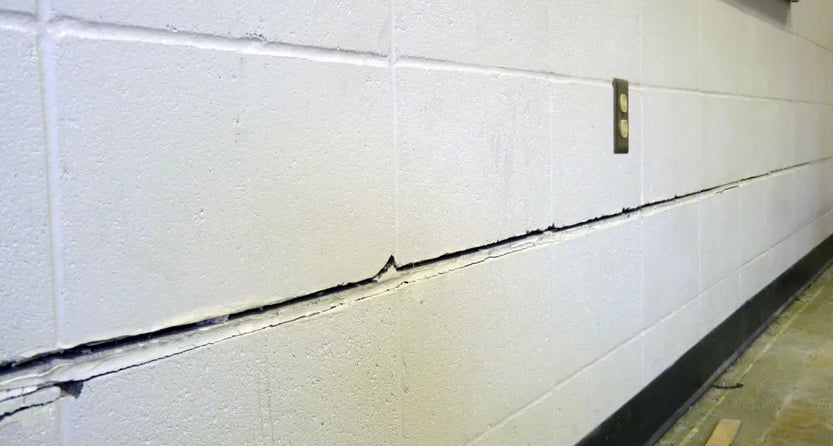Horizontal Cracks in Foundation Walls
A critical issue in the foundation


Inspecting for horizontal cracks in foundation walls is crucial because they can signal serious structural problems in your home. Unlike vertical cracks, which are often cosmetic and less concerning, horizontal cracks indicate lateral pressure on the foundation, meaning the walls are being pushed inward. This pressure can arise from various issues, each with potentially significant consequences:
Causes of horizontal cracks:
Hydrostatic pressure: This is the most common cause, where built-up water around the foundation pushes against the walls. This can happen due to poor drainage, heavy rain, or a high water table.
Soil shrinkage: When soil dries out and shrinks, it can pull away from the foundation, creating gaps and allowing lateral pressure to build.
Foundation movement: Settlement, caused by improper soil compaction or foundation flaws, can lead to the foundation sinking or shifting, putting stress on the walls and causing cracks.
Frost heave: In freezing climates, water in the soil can expand and push against the foundation, causing cracks and movement.
Why it's important to inspect:
Structural integrity: Horizontal cracks compromise the foundation's ability to support the weight of the house, potentially leading to uneven floors, sagging doors and windows, and even structural collapse in severe cases.
Water damage: Cracks create openings for water to seep into the basement or crawlspace, leading to mold growth, water damage, and potential health risks.
Property value: Unaddressed foundation issues can significantly impact a home's value, making it difficult to sell or refinance.
What to do if you find a horizontal crack:
Don't ignore it! Get a professional foundation inspector or structural engineer to assess the crack's severity and underlying cause.
Prompt repairs are crucial. Depending on the cause and severity, repairs may involve drainage improvements, soil stabilization, foundation piers, or other methods.
Early intervention is key. Addressing the issue quickly can prevent further damage and costly repairs down the line.
Remember, your home's foundation is its critical support system. Taking any potential issues seriously and addressing them promptly can save you money, protect your investment, and ensure the safety and structural integrity of your home.
